Hawaii Volcanoes National Park is one of only two national parks in Hawaii and is the only national park on the Big Island.
It is also one of the most unique parks in the national park system. It is comprised of two of the most active volcanoes in the world, Kilauea and Mauna Loa.
Mauna Loa erupted as recently as November 2022 and Kilauea’s last big eruption was in 2018.
It is such a unique experience to visit an active volcano. Keep reading to discover 9 unforgettable things to do at Hawaii Volcanoes National Park!
*Disclaimer: This post contains affiliate links. If you make a purchase through the link provided, we will receive a small commission at no extra cost to you. We really appreciate your support!
9 Unforgettable Things to do in Hawaii Volcanoes National Park
Table of Contents
- Hawaii Volcanoes National Park visitor information:
- 1. Sunrise hike at Kilauea Iki Trail
- 2. Walk through the ancient Thurston Lava Tube
- 3. Stop at the Uekahuna Bluff Viewpoint
- 4. Hike the Sulfur Banks Trail during golden hour
- 5. See the lava flow from the Keanakako’i Overlook
- 6. See the lava flow from the Kupina’i Pali (Waldron Ledge) viewpoint
- 7. Eat dinner or spend the night at the Volcano House
- 8. Drive the Chain of Craters Road
- 9. Visit Mauna Loa and Mauna Kea
Hawaii Volcanoes National Park visitor information:
- Fee: Admission to the park is $30 per vehicle and is valid for 7 days. Annual national park passes are accepted.
- Hours: The park is open 24 hours a day.
- Visitor Center: The visitor center is open year-round from 9 am to 8 pm.
- Amenities: A hotel, campground, and restaurant are located within the park.
- Useful information: Download the free National Park Service app and search for Hawaii Volcanoes National Park. This will give you access to maps, trail information, lava viewing locations, self-guided tours, park alerts, etc. You can even download the guide to use offline.
- Weather: The park is located at an elevation of 4,000 so plan to wear layers as it can get quite cold at night but hot during the day. There is always a good chance of a chilly rain, so plan accordingly.
1. Sunrise hike at Kilauea Iki Trail
The Kilauea Iki crater, or “little Kilauea” is a small pit crater located next to the main Kilauea Caldera.
The Kilauea Iki Trail is a 3.2-mile loop that skirts along the crater rim through an ancient fern and ‘ohi’a rainforest before heading down to the Kilauea Iki crater bed.
Once you reach the crater floor, you’ll have the unique opportunity to walk across what was once a molten lake of lava.
This crater was formed as a result of the 1959 eruption of Kilauea. The eruptions lasted over 5 weeks and filled this crater with a 400-foot-deep lake of molten lava.
Although the lava has since cooled and hardened, visitors can still see active steam vents scattered across the crater floor.
The crater is a mile wide and you’ll be walking over smooth buckled slabs of the lake’s crust, across welded spatter, and making your way over piles of jagged lava rock.
The barren landscape is dotted with resilient vegetation that has pushed its way through the cracks. It truly is a remarkable scene.
This trail is best experienced at sunrise when the landscape is bathed in the early morning light. You’ll also have the benefit of beating the crowds and the intense heat of the day.
For more details, see our guide to Hiking the Kilauea Iki Trail.
2. Walk through the ancient Thurston Lava Tube
The Nāhuku Lava Tube, more commonly known as the Thurston Lava Tube, was created from a river of lava over 500 years ago.
The parking lot for the lava tube is small, so you’ll want to arrive early in the morning or later in the evening. You can also access the Kilauea Iki Trail from the same parking lot so I would recommend combining the two. From the parking lot, you’ll follow a short paved trail through the rainforest.
You’ll soon come to a cool hidden tunnel shrouded in ferns and hanging vines.
The Thurston Lava Tube is only 600 feet long and the entire loop trail is only 0.5 miles, so it doesn’t take long to explore.
Lights have been installed throughout the tunnel and are turned on from 8 am to 8 pm. Plan to bring a flashlight if you plan to visit outside those hours.
As you walk through the tunnel, notice the rippling waves along the walls that were formed by the 2000-degree lava that once flowed through here.
It is a smaller version of the lava tube found at Kaumana Cave State Park, one of the Best Things to See in Hilo.
3. Stop at the Uekahuna Bluff Viewpoint
Crater Rim Drive is a road that once followed the entire circumference of the massive Kilauea Caldera.
However, much of the road was damaged during the 1983 earthquake so you can no longer drive the entire way around.
Today, you can drive a car or ride an E-bike along a 4-mile portion of the road that has several points of interest along the rim.
The road ends at the Uekahuna Bluff Viewpoint, one of the best overlooks in the park.
This lookout point is the highest summit in the park so you’ll be able to see unobstructed views over the caldera.
It is truly remarkable to take in the magnitude and scope of the Kilauea Caldera. This landscape is the result of 280,000 years of volcanic activity and it is still constantly changing.
Volcanoes are what created the Hawaiian island chain, and to this day they still continue to mold and change the landscape year after year.
There is no better place to witness the evidence of this change than at the Uekahuna Viewpoint.
The Kilauea Caldera was formed as the result of over 61 separate eruptions since the first one was documented in 1823.
As the Halemaʻumaʻu pit crater erupts inside the Kilauea Caldera, it continuously collapses and expands the caldera.
The fluid eruptions also form layers upon layers of molten rivers and lakes. You can still see dozens of steam vents releasing steam from the cracks within these once-molten lakes of lava.
There is currently an active lava lake found in the Halemaʻumaʻu Crater about a mile away from the viewpoint. If you visit at night, you can see a sliver of the lake and the faint glow of the lava.
After your morning hike and visiting the lookout points, I would recommend taking a drive down to South Point to cliff jump and hang out at the beach during the hottest part of the day.
4. Hike the Sulfur Banks Trail during golden hour
The Sulfur Banks Trail is an easy 1.4-mile loop trail that begins right at the Kilauea Visitor Center.
If you haven’t had a chance to stop at the visitor center yet, I would suggest popping inside to learn a little bit more about the history of Hawaii Volcanoes National Park.
You can grab some maps and park brochures, see the schedule for ranger-led walks, and inquire about the best place to view the lava flow as it is constantly changing.
I would also recommend talking to one of the rangers on hand. They are eager to answer any questions and have some fascinating stories and first-hand accounts of the eruptions over the years.
The ranger we talked to informed us that they had recently detected volcanic activity at Mauna Loa and were expecting it to erupt soon.
Sure enough, less than a month later we saw the eruption all over the news.
After gathering some information at the visitor center, head out to explore the Sulfur Banks Trail.
The paved trail leads through the forest then out to an open field where you’ll walk along a boardwalk surrounded by active steam vents.
It is similar to the landscape at Yellowstone National Park, and you’ll even recognize the same rotten egg smell from the hydrogen sulfide gas.
The volcanic fumes can be hazardous so this hike is not recommended for infants, young children, pregnant women, or those with respiratory problems.
Be sure to always stay on the trail, there have been documented deaths of people wandering off the path and falling into the steam vents.
The trail crosses over Crater Rim Drive and connects to the Crater Rim Trail where it loops back to the visitor center.
Once you connect to the Crater Rim Trail, I would highly recommend taking a short detour to the right along the Crater Rim Trail to see the Steaming Bluffs.
The trail follows right along the rim with views of the Kilauea Caldera.
If you visit in the evening during golden hour, the sun filters through the steam and gives off an ethereal glow.
After the detour, continue on the trail back to the visitor center.
For another great hike on the Big Island, check out the Pololū Valley Lookout Trail.
5. See the lava flow from the Keanakako’i Overlook
After Kilauea erupted in 2018, you couldn’t see any lava in the park for several years.
As of September 2021, lava once again began erupting from a single vent in the Halema’uma’u Crater located within the Kilauea Caldera.
Witnessing this roiling and spewing lake of molten lava is truly an unforgettable experience.
The best place to see the glow of the lava lake is from the Keanakako’i Overlook.
This is the closest that you can safely get to the crater, but keep in mind that the viewing deck is still about a half-mile away from the crater.
You’ll want to come after dark when the luminous glow can be seen from miles away. If you come during the day, you won’t see much.
You’ll also want to bring binoculars or a camera with a zoom lens and a tripod. And never attempt to go past the barrier to get a closer look, as this could be fatal.
To reach the Keanakako’i viewing area, you’ll park at the Devastation Trail parking lot.
There is limited parking and it can get extremely busy between 5-9 pm, so I would highly recommend visiting before sunrise or after 9 pm.
If the Devastation Trail parking lot is full, there is additional parking at the Puʻupuaʻi Overlook about a half-mile away.
After parking, you’ll walk for one mile along the old Crater Rim Drive before reaching the lookout.
Be sure to wear sturdy shoes and bring a flashlight. Portions of the road have buckled and cracked due to earthquakes so watch where you’re going so that you don’t trip.
The volcanic activity is ever-changing, so I would recommend checking for eruption viewing updates on the NPS website before visiting.
This is one of our top recommended stops while spending a week on the Big Island. For a complete itinerary, see our guide for the Best Things to do on the Big Island in One Week.
6. See the lava flow from the Kupina’i Pali (Waldron Ledge) viewpoint
While the Keanakako’i Overlook is the closest viewpoint to the lava lake, it is also the most crowded.
The ranger at the visitor center let us in on a little secret.
There is an easy half-mile trail from the visitor center that leads to the Kupina’i Pali, or Waldron Ledge, overlook where you can see the glow of the lava without all the crowds.
The trail follows along the old Crater Rim Drive where you can still see the painted road lines.
This trail is also referred to as “earthquake trail” since you can see cracks in the old road resulting from the earthquake.
Once you reach the viewpoint, the Halema’uma’u crater lake is about 2 miles away.
It is difficult to see the spewing lava during the day, but if you come at night you can see the vibrant glow.
7. Eat dinner or spend the night at the Volcano House
The Volcano House is a historic hotel perched on the rim of the Kilauea Caldera.
The original single-room Volcano House was built in 1846. In 1866, the Volcano House expanded to a modest four-bedroom hotel where Mark Twain once stayed.
Today, the historic hotel boasts 33 guest rooms, 10 cabins, and 16 campsites all located within Hawaii Volcanoes National Park.
I would highly recommend staying in or near the park in order to be there early for a sunrise hike, and to stay after dark for the lava viewing.
We stayed at this Airbnb about 5 minutes outside of the park.
It was great for our family, the kids especially enjoyed the hot tub.
Here are a few more vacation rentals located near Hawaii Volcanoes National Park.
Even if you aren’t a guest at the hotel, you can still enjoy a meal at the Volcano House with views of the caldera through the wall of windows and outdoor viewing deck.
There are two dining options to choose from. You’ll want to make reservations in advance for The Rim Restaurant as there is always a wait.
Uncle George’s Lounge is a more casual option with carry-out as well. We picked up some pizza for a picnic and it was really good!
8. Drive the Chain of Craters Road
The Chain of Craters Road is a 19-mile road (38 miles roundtrip) that descends 3,700 feet as you make your way down to the coast.
As you drive, the road crosses over lava fields with signs marking which eruption year the lava was from.
You may want to consider downloading this self-guided audio tour that gives interesting insights and history as you drive along the Chain of Craters Road and throughout the whole park.
The road ends at the Holei Sea Arch, a 90-foot-high natural sea arch that was formed by erosion along the coast.
Just after the sea arch, you can see evidence of the most recent 2018 Kilauea eruption where lava flowed all the way into the ocean at this point.
*Related post: Check out these 8 Fun Things to do in Kona
9. Visit Mauna Loa and Mauna Kea
There are actually 5 volcanoes on the Big Island, two of which are located in Hawaii Volcanoes National Park.
Kilauea is the most popular volcano to visit as it is the easiest one to access.
However, Mauna Loa is also located within the park and is considered the largest active volcano in the world.
Visitors can drive up the narrow one-lane Mauna Loa Road to reach the Mauna Loa Lookout. This has recently reopened after the November 2022 eruption.
Plan for about one hour to drive to the lookout point from the visitor center.
Unfortunately, the Mauna Loa Trail that begins at the lookout point is still currently closed due to hazards from the eruption. Check the site for updates.
Mauna Kea is located outside of Hawaii Volcanoes National Park, but is still worth a visit.
Mauna Kea last erupted 4,500 years ago, but its claim to fame is that it is the tallest mountain in the world.
More than half of it is submerged below the ocean, but it is actually 4,000 feet taller than Mount Everest.
This is also considered one of the best places on earth to go stargazing.
You can drive to the visitor center halfway up (at an elevation of 9,200 feet) where you can find more information about Mauna Kea and do some stargazing on your own.
However, you’ll need 4WD If you want to continue past the visitor center to reach the telescopes located at the summit.
It is highly recommended to book a Stargazing Tour that takes you to the summit instead of attempting the drive on your own, especially since there is often snow at the top.
[convertkit form=3250084]
FAQ:
- Is it safe to visit Hawaii Volcanoes National Park? The short answer is yes. While Kilauea and Mauna Loa are both active volcanoes, volcanic activity is constantly being monitored and evacuations will be put into place if there is any threat of danger. With that being said, visitors must adhere to all safety guidelines including staying only on marked trails, in order to stay safe within the park.
- Can you see lava at Hawaii Volcanoes National Park? As of September 2021, lava has once again returned to Halema’uma’u Crater. Visitors can view the active lava lake from several lookout points in the park.
- Where is the best place to see the lava at Hawaii Volcanoes National Park? The closest viewing point to see the lava is at the Keanakako’i Overlook. You can also see the lava at the Uekahuna Overlook, and at the Kupina’i Pali (Waldron Ledge) Overlook.
- Is Hawaii Volcanoes National Park worth it? Yes! One of the things that makes the Big Island so unique is that visitors will have a once-in-a-lifetime opportunity to get up close to active volcanoes and see a glowing lava lake. It is definitely worth the effort to get there!
- How much time do you need in Hawaii Volcanoes National Park? Visitors can see and do most everything in the park in one day. However, it is highly recommended to spend the night in or near the park so that you can get there early before the crowds for a sunrise hike and stay after dark to see the lava.
- Can you tour Volcanoes National Park on your own? Yes, the park is open to visitors who would like to explore on their own. For those who are visiting the island on a cruise stop or need transportation, there are also guided tours available that depart from Hilo.
I hope this guide has helped you discover the best things to do at Hawaii Volcanoes National Park!
Pin it for later:
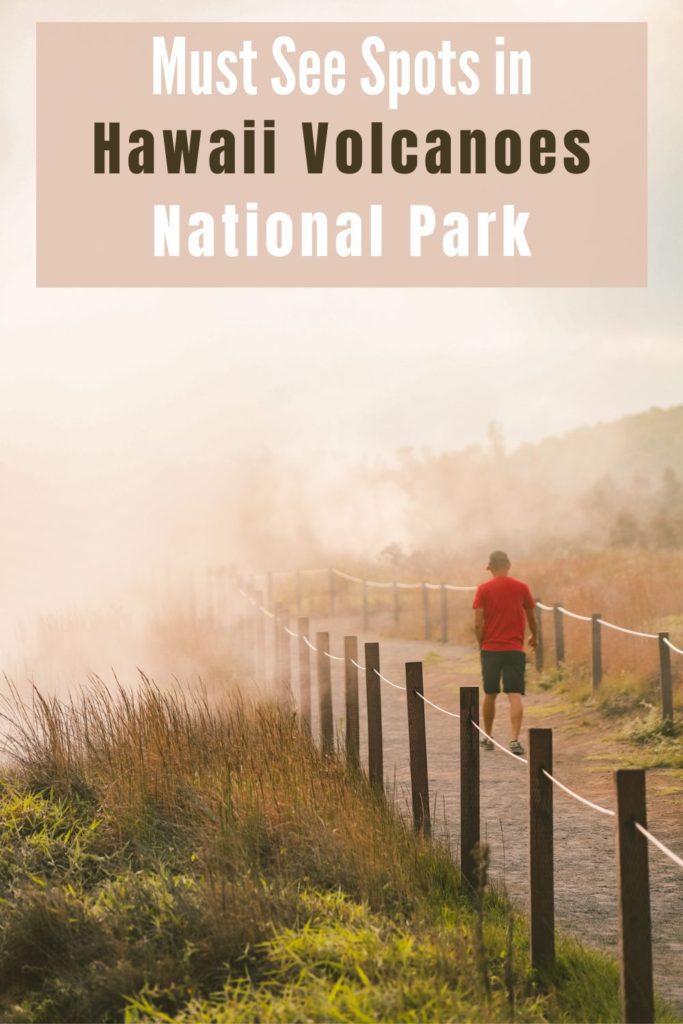
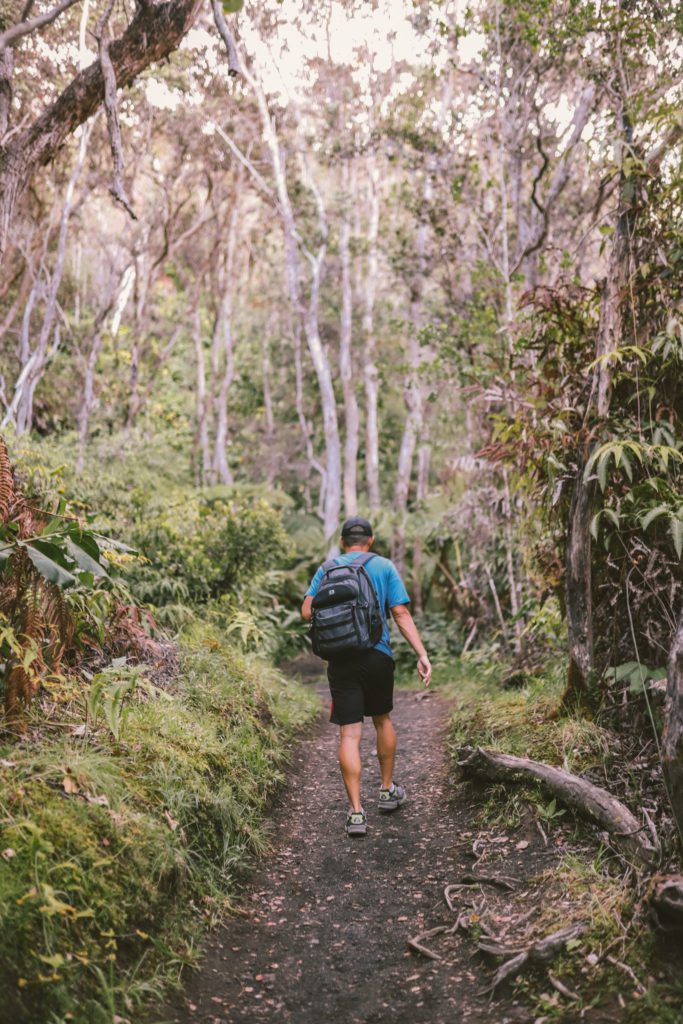


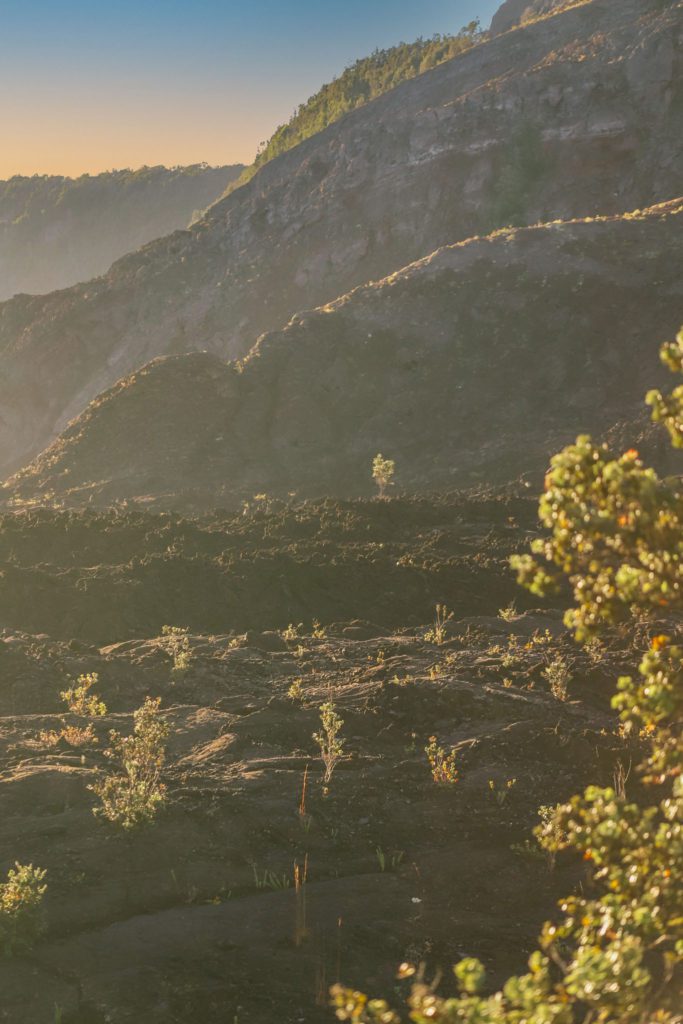

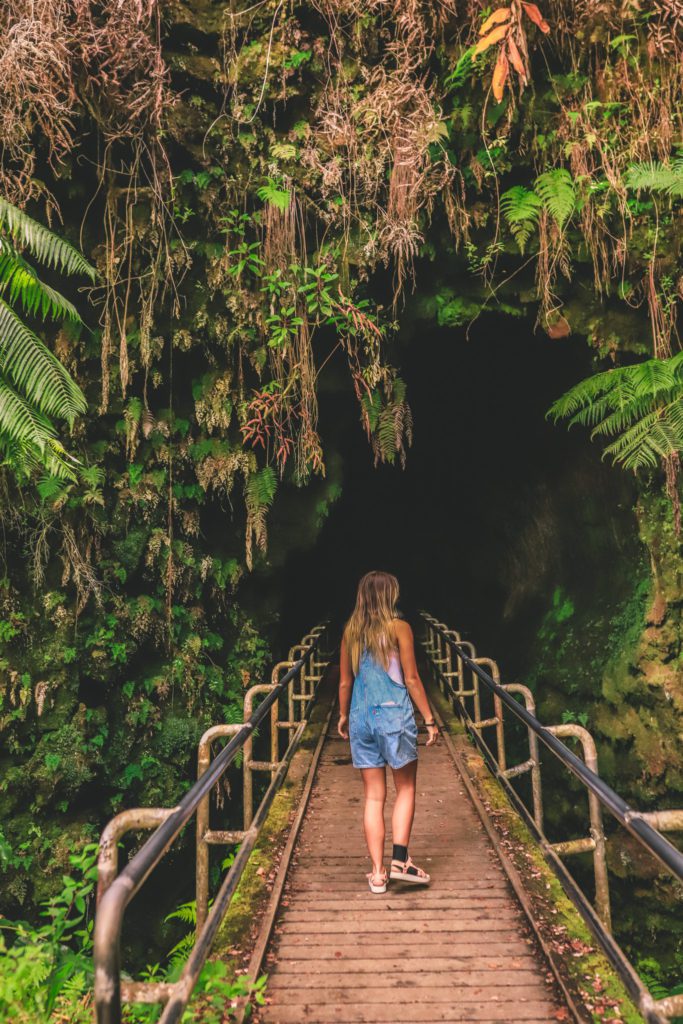

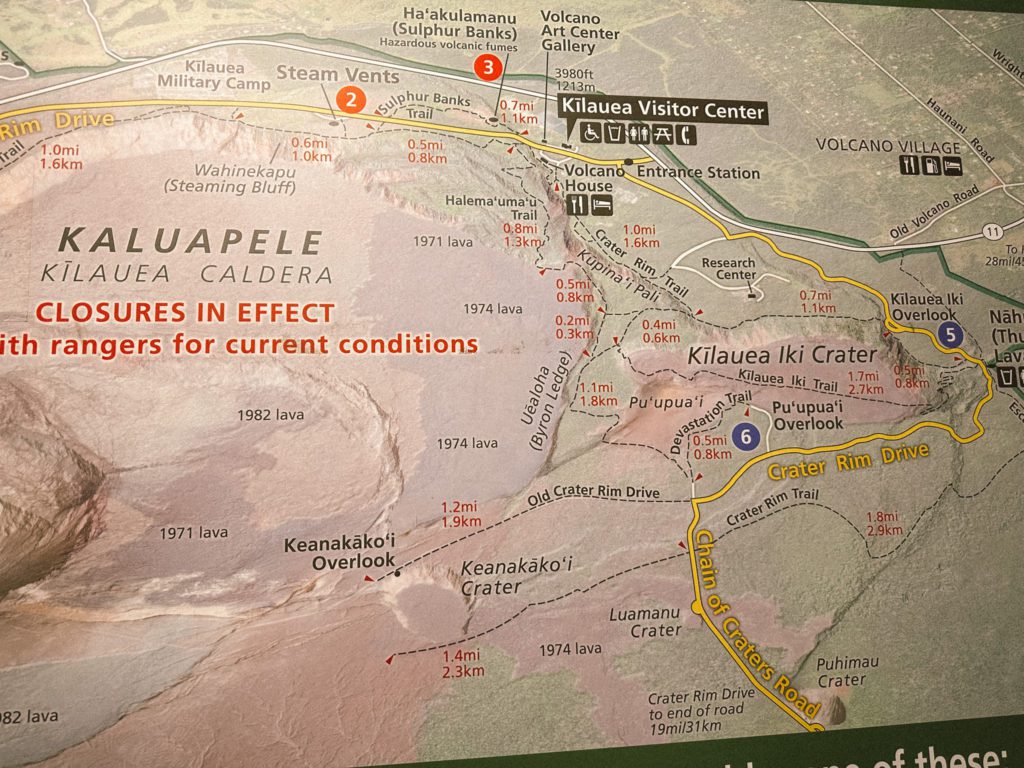
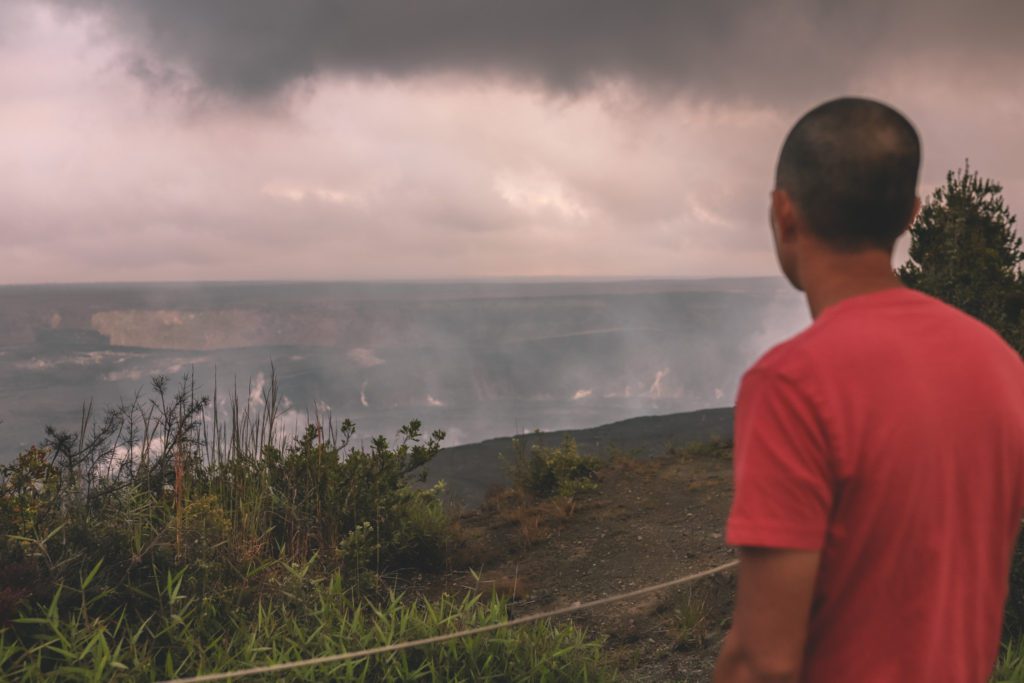
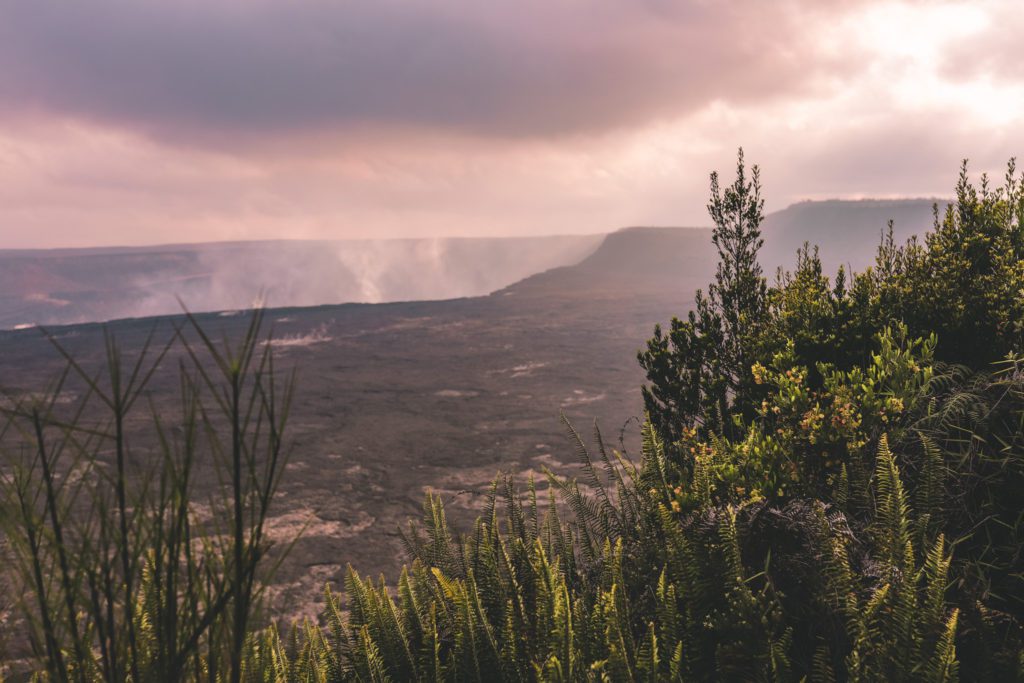
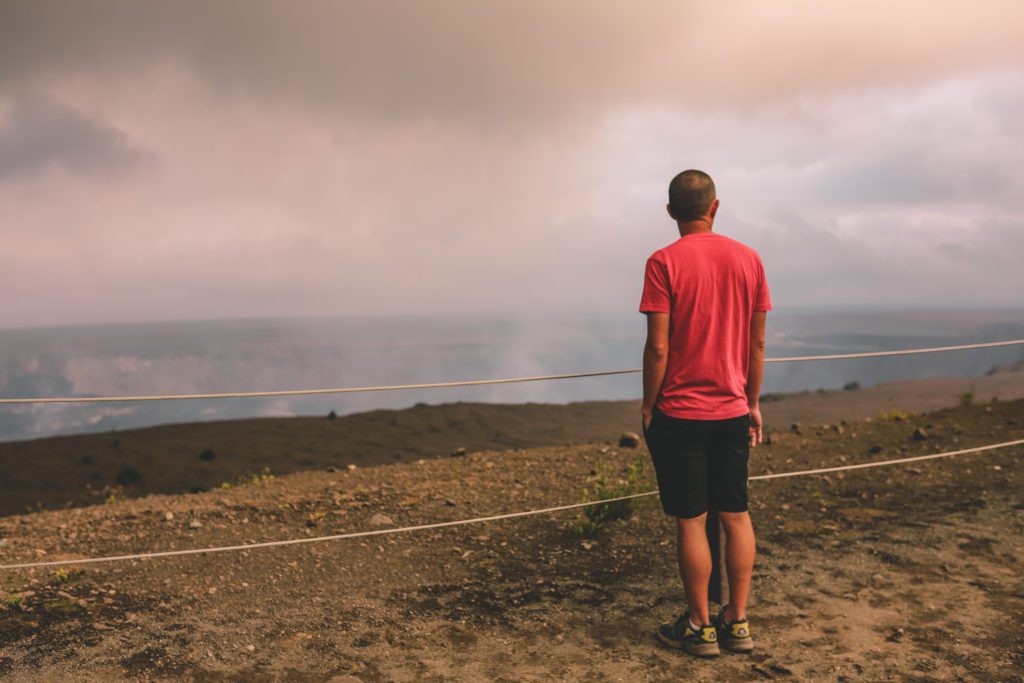
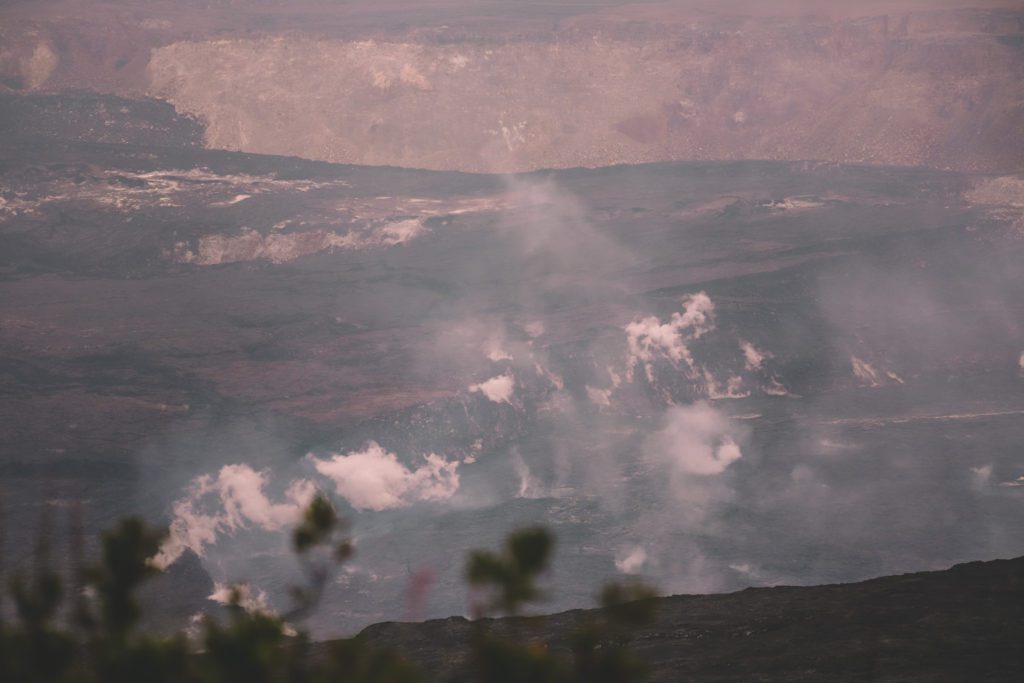
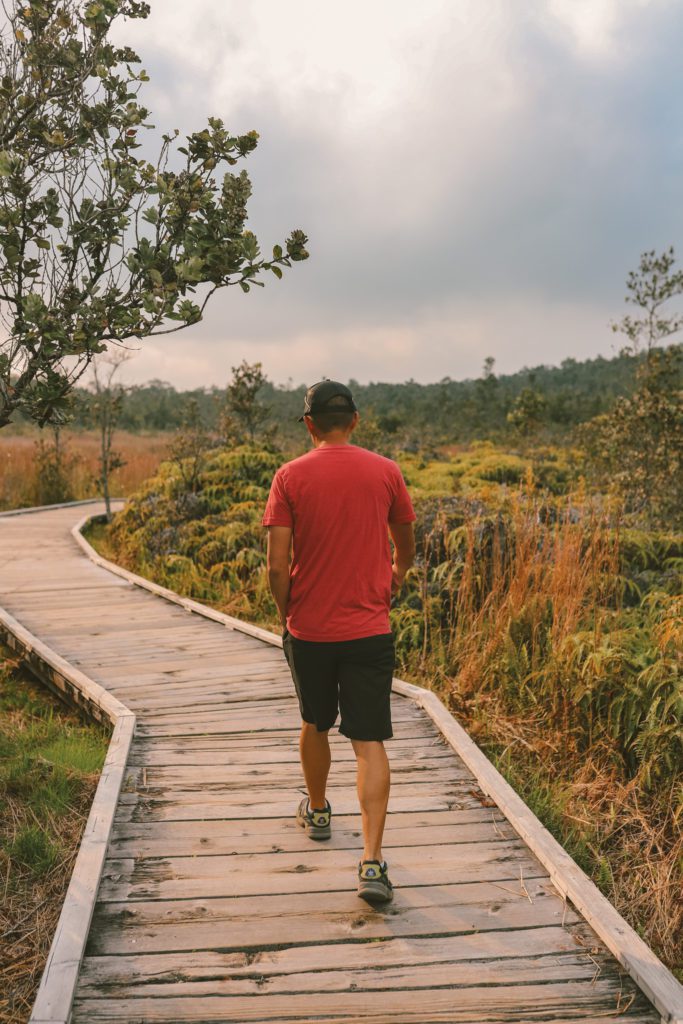
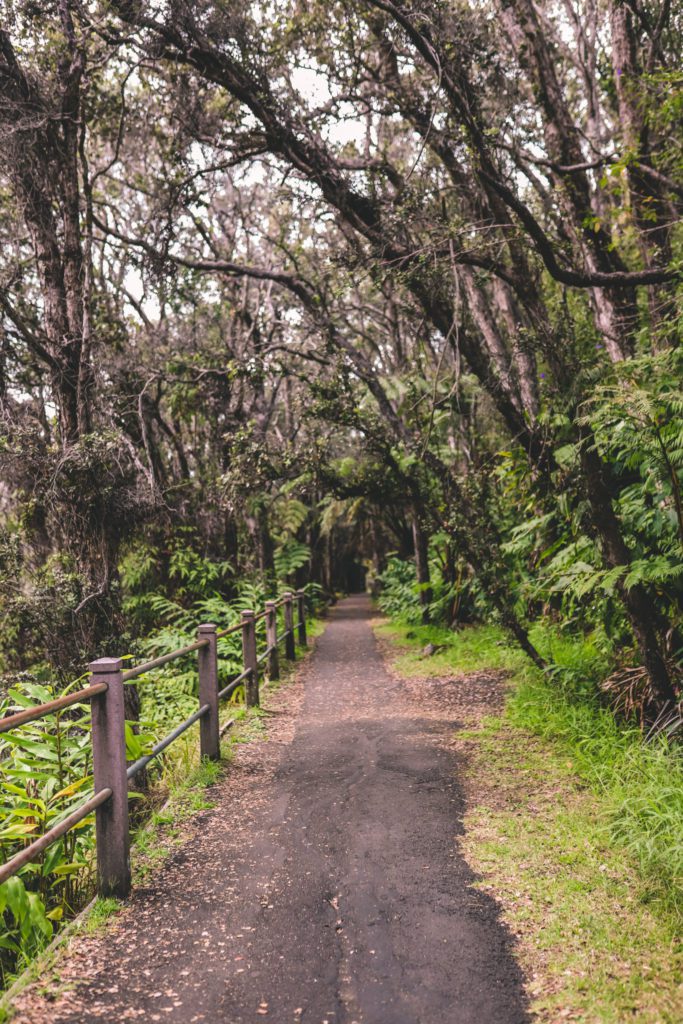
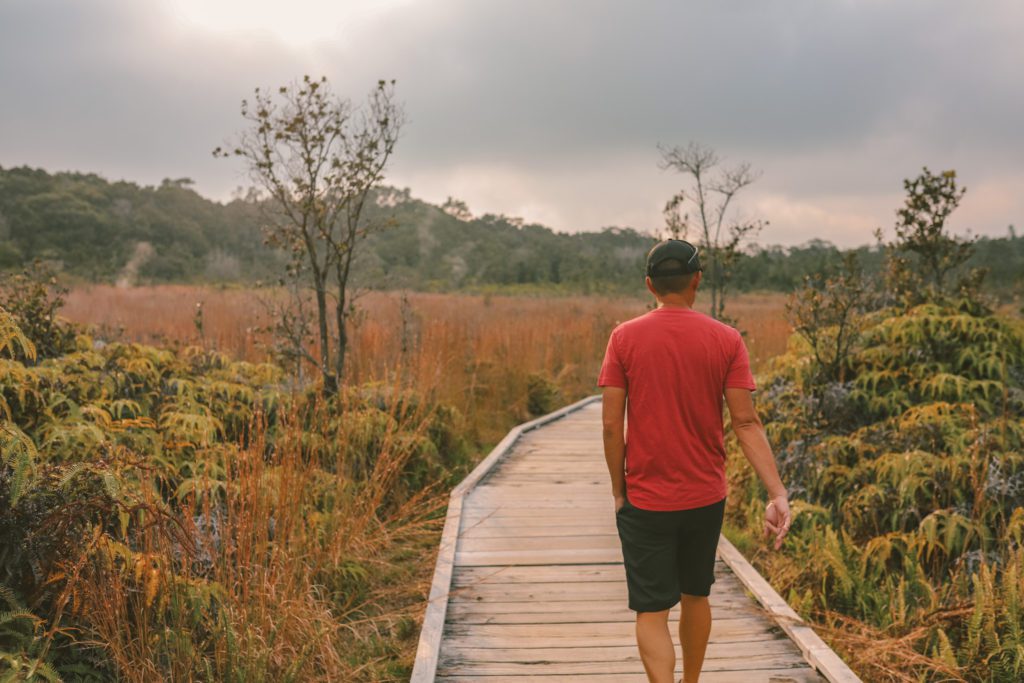

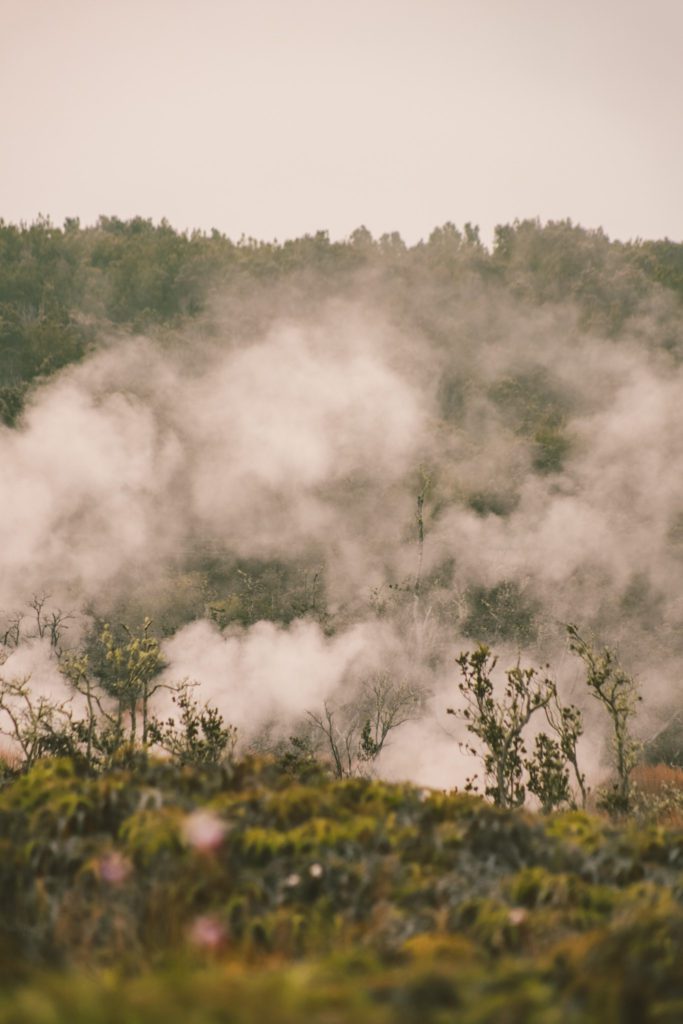

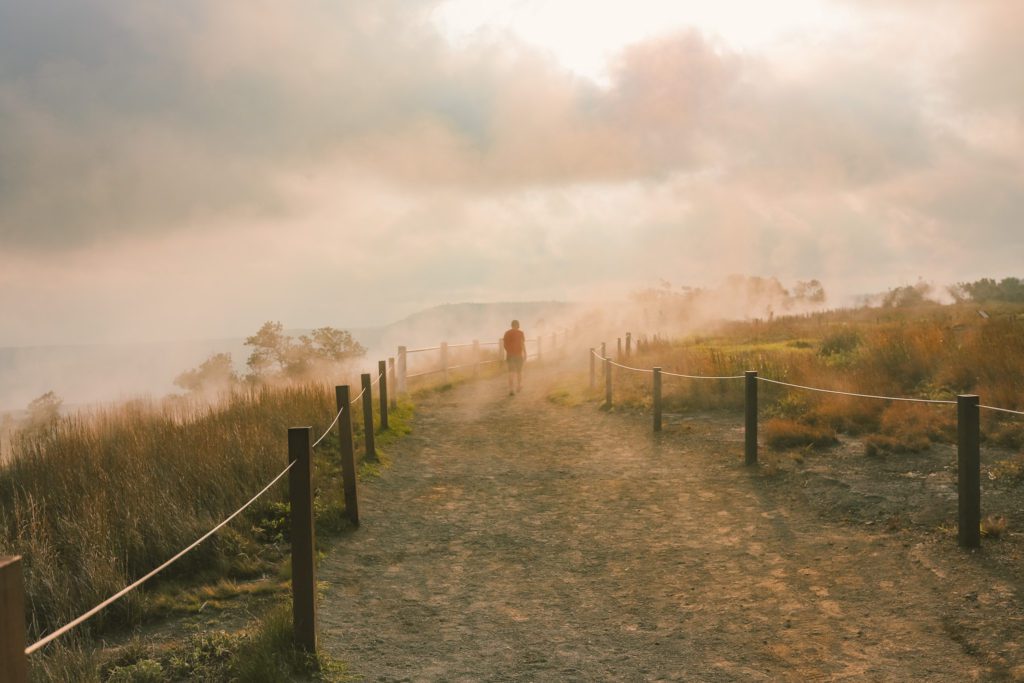
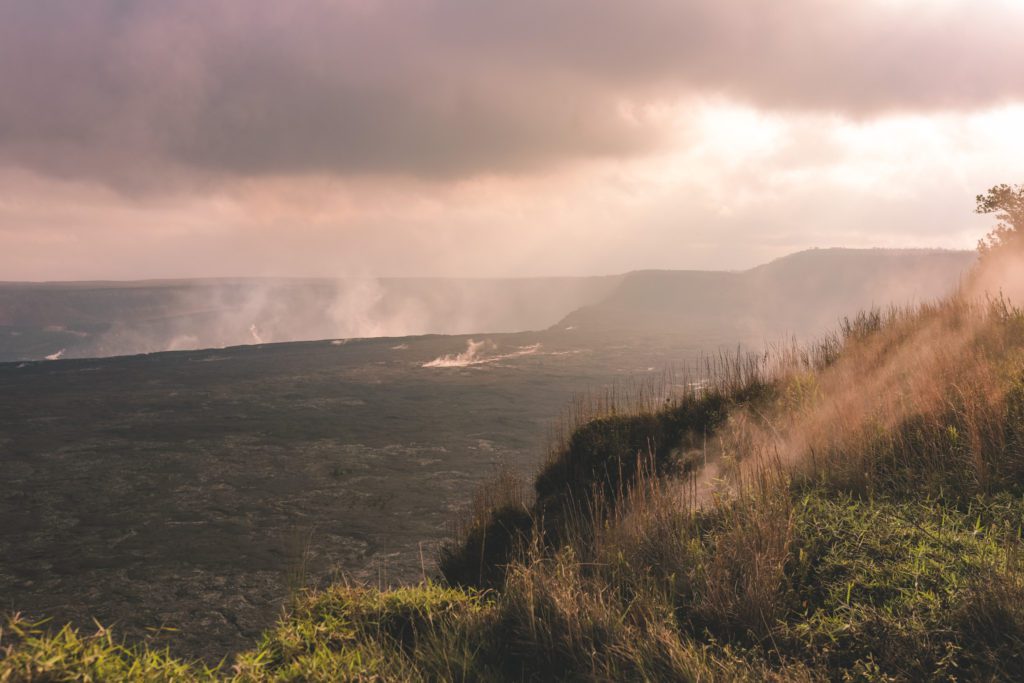

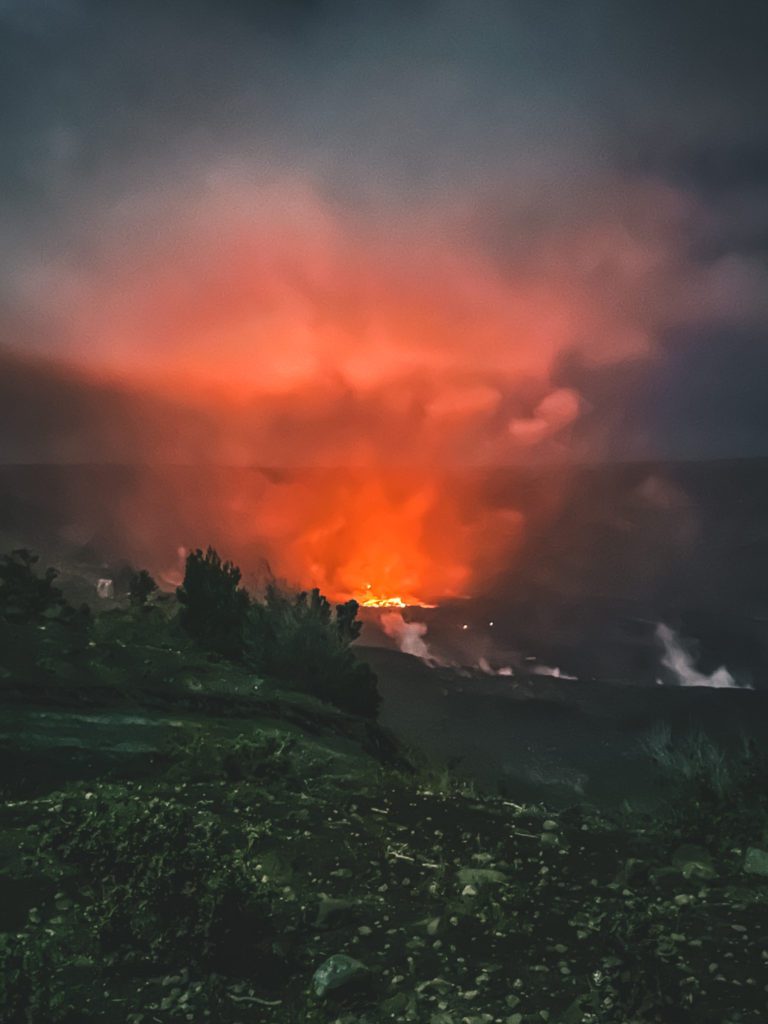

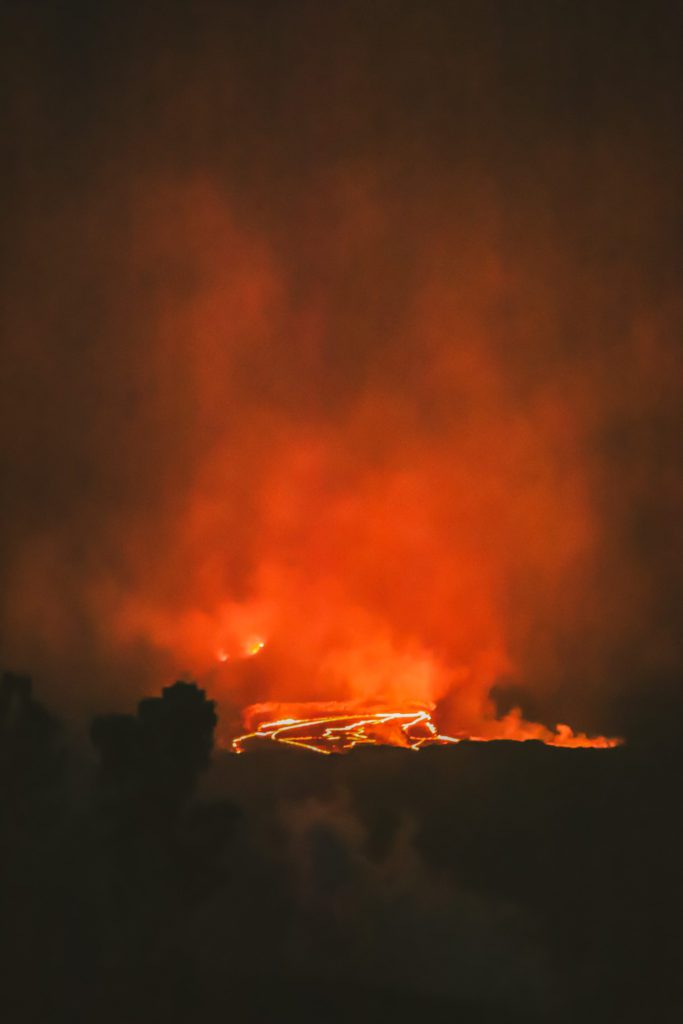
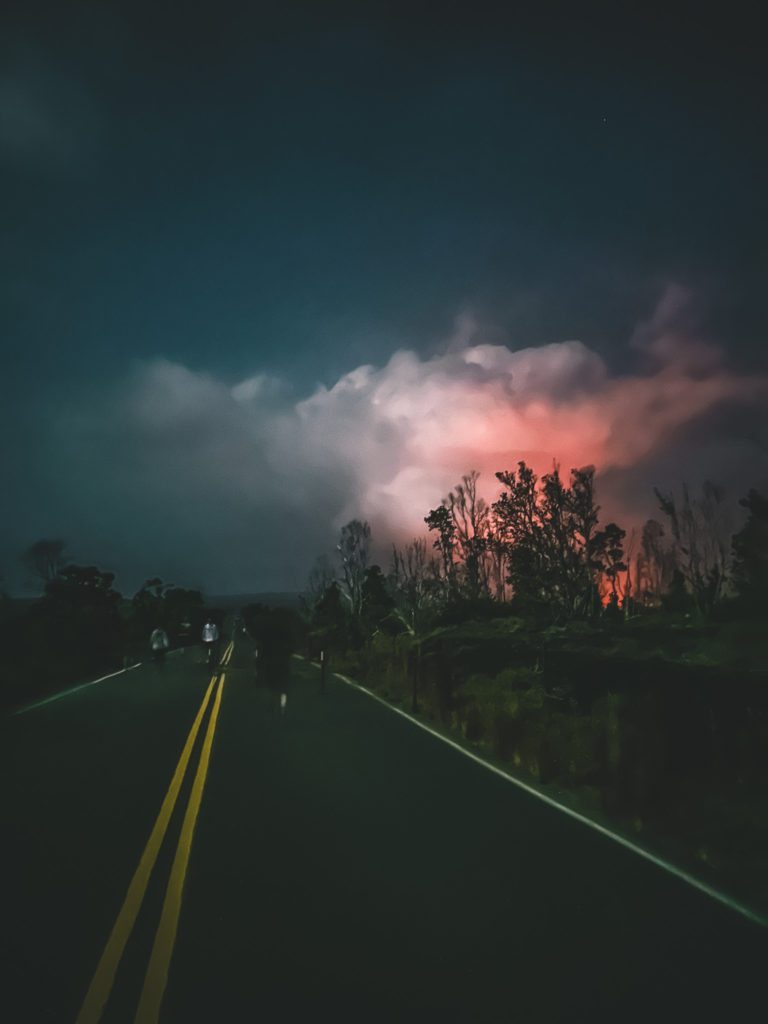
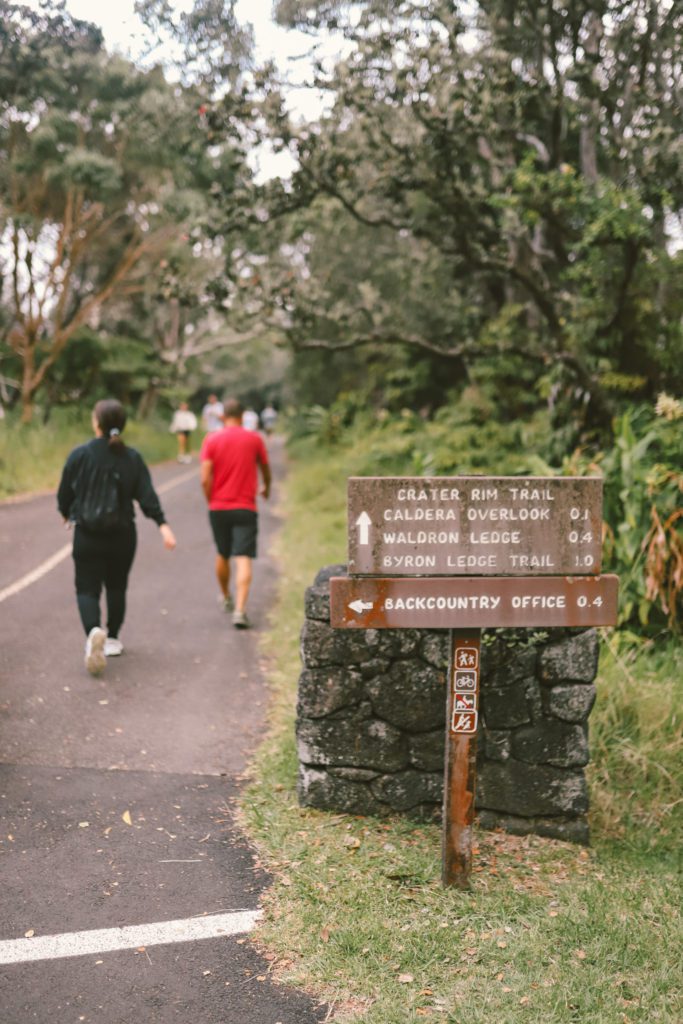

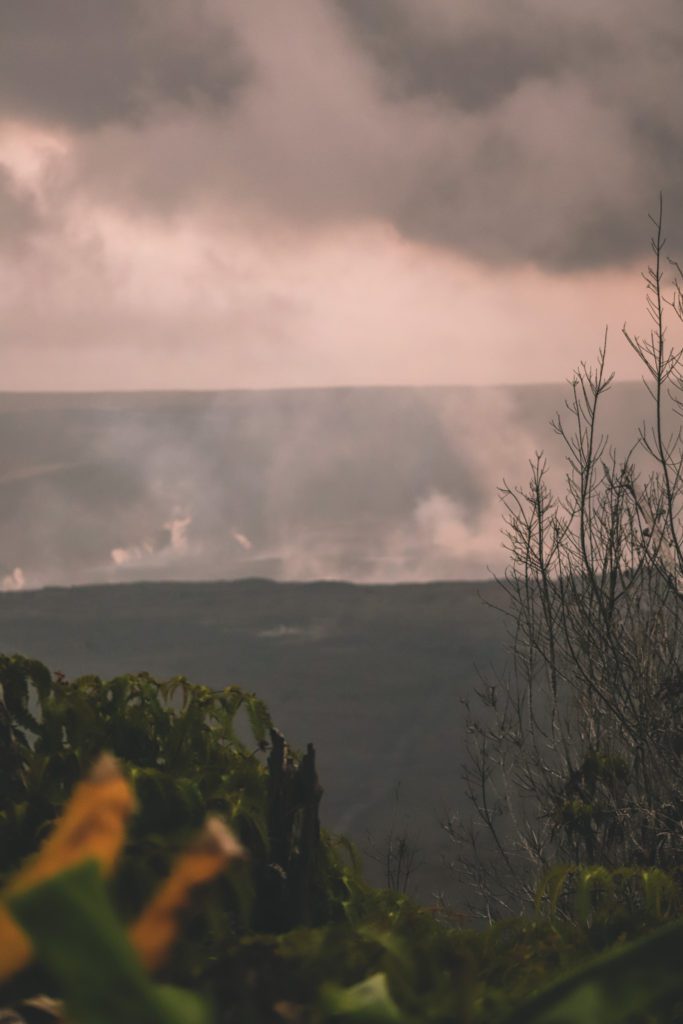
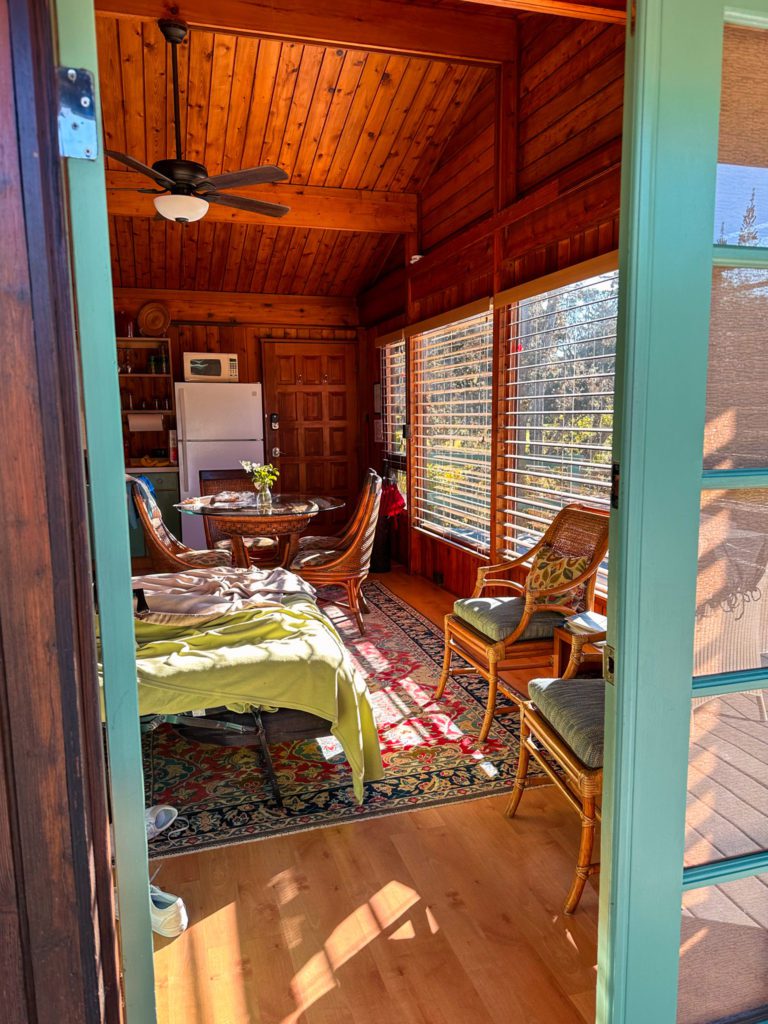
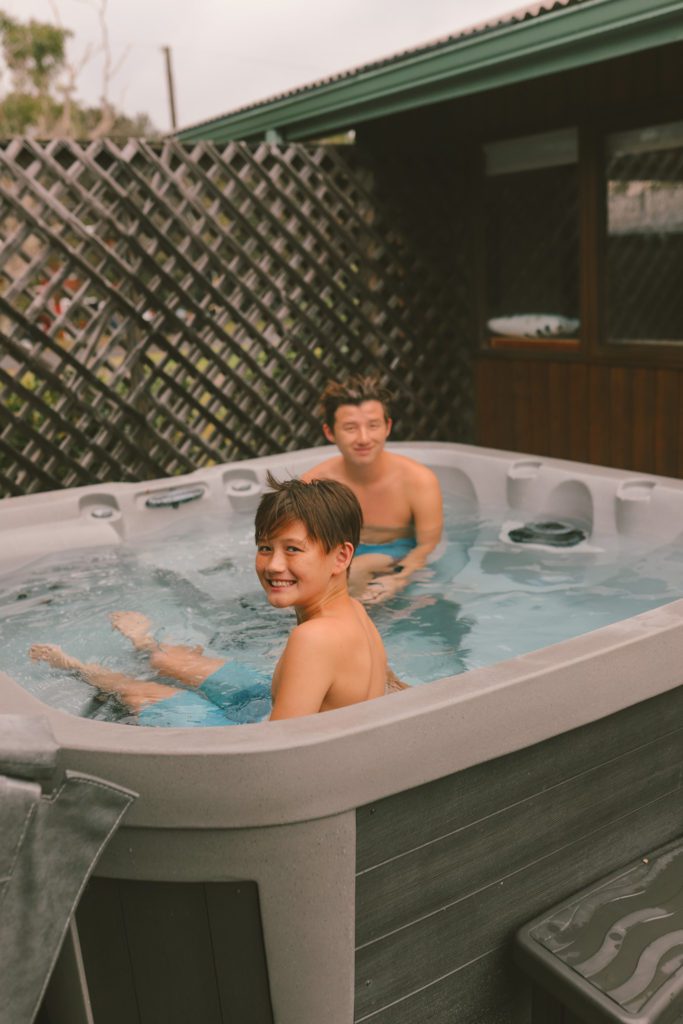
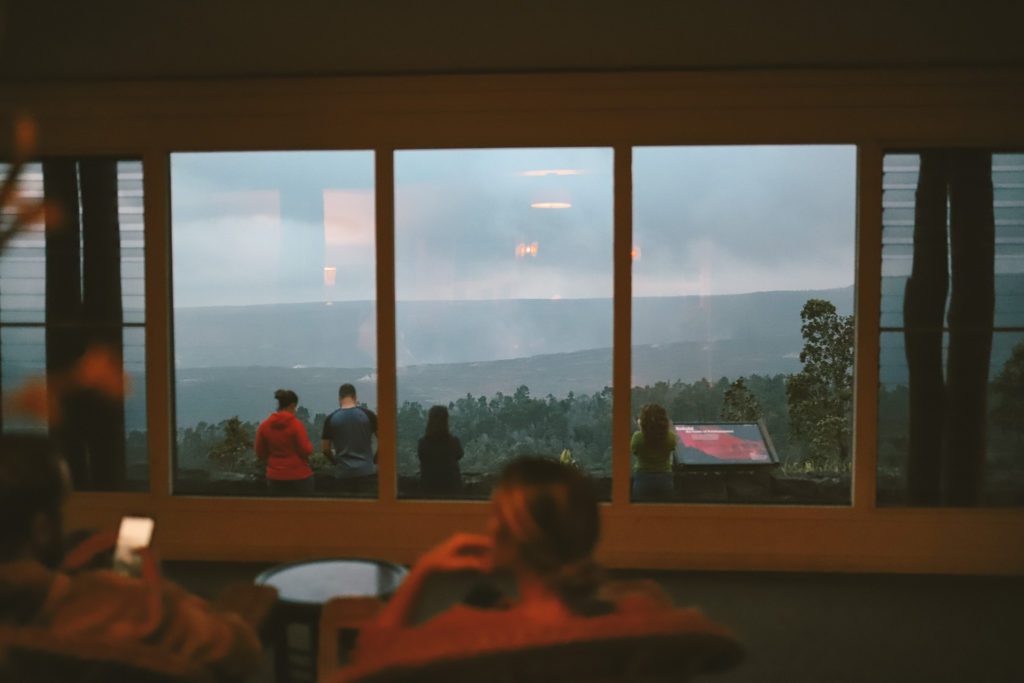
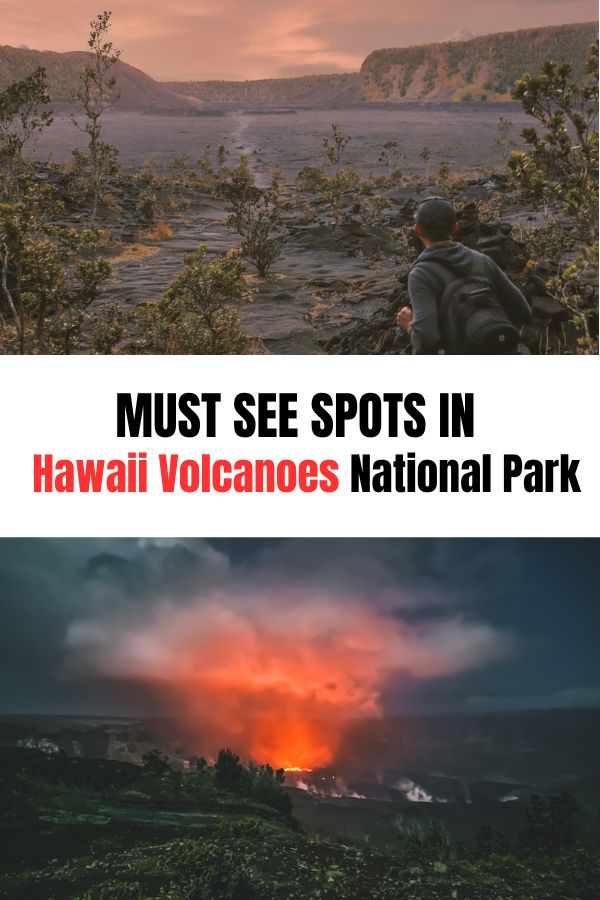
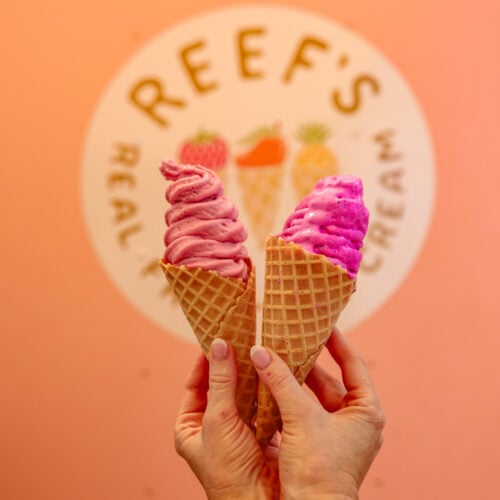
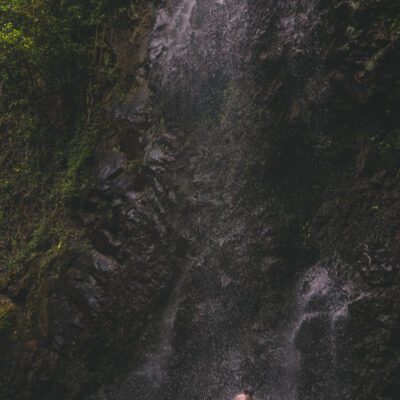

[…] is also located only about a half hour from Hawaii Volcanoes National Park, so it’s easy to take a quick side trip while visiting the […]